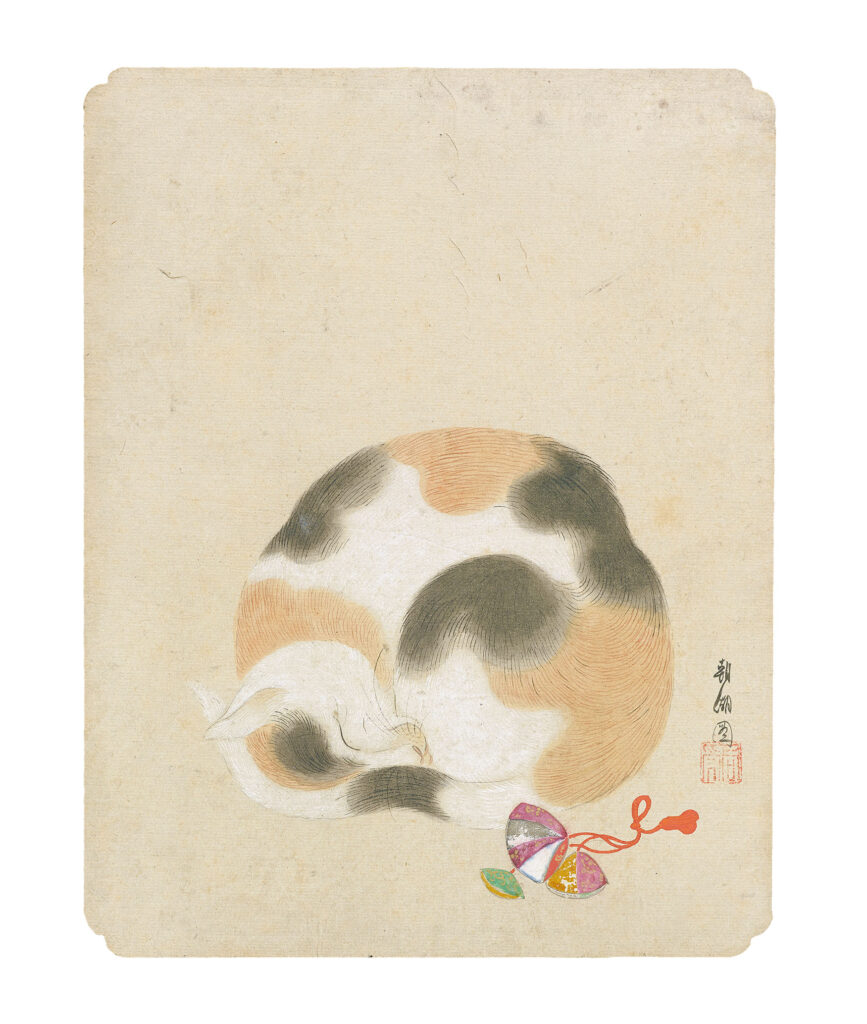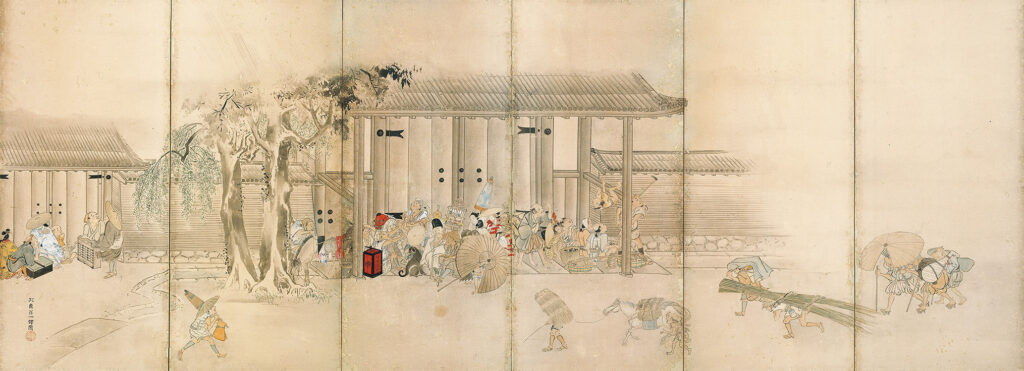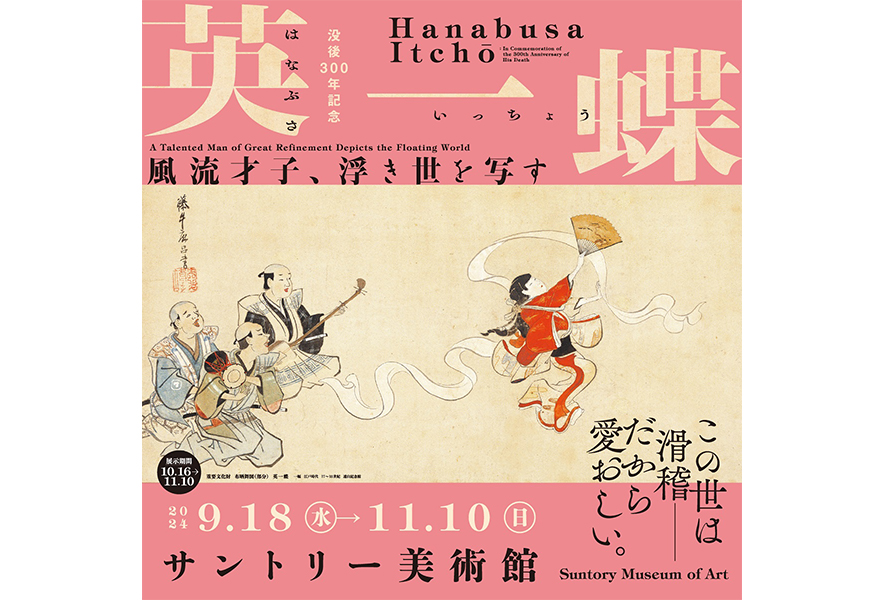Overview
Hanabusa Itchō was a painter active mainly in Edo around the Genroku era (1688-1704). He was initially educated academically under Kano Tanyu (狩野探幽)’s younger brother Yasunobu (安信), but was inspired by Hishikawa Moronobu (菱川師宣) and Iwasa Matabee (岩佐又兵衛), among others, to create his own unique genre paintings depicting people of the city. This new style of urban genre painting was widely loved, and a school called the Hanabusa school was formed by disciples who admired Itchō’s painting style. Many other painters, such as the ukiyoe artist Utagawa Kunisada (歌川国貞), were also admirers of Itchō, and he continued to exert a great influence on later generations. He also studied haikai (俳諧) under Matsuo Basho (松尾芭蕉), and his talents were expressed in a wide range of genres.
In addition, his tumultuous life also added to his popularity. Itchō’s unique career began in the 11th year of the Genroku era, when, at the age of 47, he was exiled to Miyakejima (三宅島). He returned to Edo (present-day Tokyo) in 1876, following an amnesty granted to him by the new Shogun, but the works he painted on the island are known as ‘Shima Itchō (島一蝶)’ and are particularly highly regarded. After his return to Edo, he changed his painting name from ‘Taga Choko (多賀朝湖)’ to ‘Hanabusa Itchō’.
The year 2024 marks the 300th anniversary of Itchō’s death. To mark this milestone, the largest-ever retrospective exhibition of Itchō’s work will be held. The exhibition will explore the artistic activities and fascinating personality of a talented man of great refinement Hanabusa Itchō through his fresh early works, valuable works from his period of exile and his later works after his return to Edo (present-day Tokyo).
Term: 18 September (Wed.) – 10 November (Sun.) 2024
*For the protection of the works, the exhibition will be changed during the exhibition period.
Open: 10:00 am – 6:00 pm (10:00-20:00 on Fridays)
*Open until 20.00 on 9 November (Sat.)
*The museum will be open until 22:00 on September 27 (Fri.) and 28 (Sat.) for Roppongi Art Night.
*Admission until 30 minutes before closing.
Closed: Closed on Tuesdays (5 November, open until 6pm)
SUNTORY MUSEUM of ART official website: https://www.suntory.co.jp/sma/
Exhibition composition
Chapter 1 The Taga Choko Era
This chapter traces the development of Itchō’s abilities as a genre painter during the period when he called himself ‘Taga Choko’, while still having a foundation in the Kano school. It also introduces his activities in the field of haikai and focuses on his multiple talents.

Paintings of Miscellaneous Subject, Sleeping cat Hanabusa Itchō, Album (36 paintings), Edo period, 17th century, Okura Museum of Art
Chapter 2 The Shima Itchō Era
His life on Miyakejima lasted a total of 12 years, from the ages of 47 to 58, and produced a number of works known as ‘Shima Itchō’, which are emblematic of Itchō’s painting career. This chapter introduces the production of these works through the masterpieces painted during his exile.

Important Cultural Property The Cloth-Bleaching Dance Hanabusa Itchō, Hanging scroll, Edo period, 17th-18th century, Tōyama Memorial Museum
Chapter 3 The Hanabusa Itchō Era
This chapter, which concludes the exhibition, brings to light the artistic and personal life of Hanabusa Itchō, the ‘A Talented Man of Great Refinement’ who captivated people with his outstanding talent and refined aesthetic sense, through outstanding works from his later years and haisho (俳書; haiku calligraphy).

Taking Shelter from the Rain, Hanabusa Itchō, Six-panel folding screen, Edo period, 18th century, Tokyo National Museum
*The order of chapters and artworks may change at the exhibition.
Term: 18 September (Wed.) – 10 November (Sun.) 2024
*For the protection of the works, the exhibition will be changed during the exhibition period.
Open: 10:00 am – 6:00 pm (10:00-20:00 on Fridays)
*Open until 20.00 on 9 November (Sat.)
*The museum will be open until 22:00 on September 27 (Fri.) and 28 (Sat.) for Roppongi Art Night.
*Admission until 30 minutes before closing.
Closed: Closed on Tuesdays (5 November, open until 6pm)
SUNTORY MUSEUM of ART official website: https://www.suntory.co.jp/sma/

